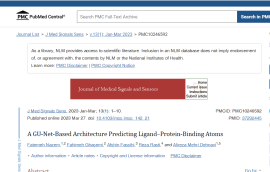The first step in developing new drugs is to find binding sites for a protein structure that can be used as a starting point to design new antagonists and inhibitors. The methods relying on convolutional neural network for the prediction of binding sites have attracted much attention. This study focuses on the use of optimized neural network for three-dimensional (3D) non-Euclidean data.
Methods:A graph, which is made from 3D protein structure, is fed to the proposed GU-Net model based on graph convolutional operation. The features of each atom are considered as attributes of each node. The results of the proposed GU-Net are compared with a classifier based on random forest (RF). A new data exhibition is used as the input of RF classifier.
Results:The performance of our model is also examined through extensive experiments on various datasets from other sources. GU-Net could predict the more number of pockets with accurate shape than RF.
Conclusions:This study will enable future works on a better modeling of protein structures that will enhance knowledge of proteomics and offer deeper insight into drug design process.
Keywords: Graph convolutional neural network, point cloud semantic segmentation, protein–ligand-binding sites, three-dimensional U-Net model
Fatemeh Nazem,1,2 Fahimeh Ghasemi,2 Afshin Fassihi,3 Reza Rasti,4 and Alireza Mehri Dehnavi1,5


